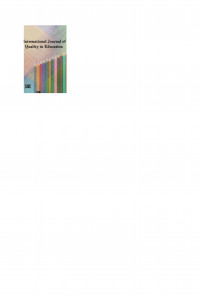Abstract
Teaching and learning activities in a classroom setting have been enhanced in
current times where more participatory approaches are followed from pre-primary to
tertiary level of education. While thinking participatory approaches, innovative approaches are always essential to be device so that maximum can be derived from classroom activities. The approaches may vary from different aspects but the objectives are
mostly to garner focus, creativity, concentration and participation in the classroom activities which will enhance the overall grasp of the teaching and learning activities.
This study through the primary sources is intended towards exploring three innovative approaches in classroom activities with the assessment of the same at the end of
the semester (i.e. Syllabus). The qualitative data obtained through survey questionnaires
shows that the three innovative approaches in the form of meditation, review and question-and-answer sessions show that there is promising potential in the enhancement of
focus, concentration, creativity and participation in student
References
- Agliulova, L., & Panyagin, D. (2021). The advantages of introducing meditation andpranayama before and after physical education. Bulletin of Science and Practice, 7(7), 304-309. https://doi.org/10.33619/2414-2948/68/40
- Baesler, E. J. (2015). Meditating in the classroom: Cultivating attention and insight. Listening Education, 1(6), 8-15.https://digitalcommons.odu.edu/communication_fac_pubs/2
- Biech, E. (2015). Engaging participants in learning. 101 More Ways to Make Training Active, 81-101. https://doi.org/10.1002/9781119154754.ch5
- Boud, D. (1995). Involving self and peers in the assessment of class participation. Enhancing Learning Through Self-assessment, 101-109. https://doi.org/10.4324/9781315041520-13
- Bozkurt, F. (2020). Teacher Candidates’ Views On Self And Peer Assessment As ATool For Student Development. Australian Journal of Teacher Education, 45(1). Retrieved from https://ro.ecu.edu.au/ajte/vol45/iss1/4
- Farb, N. A., Rautu, A., & Vervaeke, J. (2009). Cultivating insight: The effects of mindfulness meditation on insight problem-solving. PsycEXTRA Dataset. https://doi.org/10.1037/e601182009-001
- Le, H. V. (2021). An investigation into factors affecting the concentration of University students. Journal of English Language Teaching and Applied Linguistics, 3(6),07-12.https://doi.org/10.32996/jeltal.2021.3.6.2
- Maher, S. F. (2013). The effects of engagement activities on pre-physical therapy students across one semester of class. Student Engagement and Experience Journal, 2(2). https://doi.org/10.7190/seej.v2i2.65
- Mata, J. (2012). Meditation: Using it in the classroom. Spirituality in the 21st Century: Journeys beyond Entrenched Boundaries, 109-119. https://doi.org/10.1163/9781848882577_012
- Moore, M. C. (1992). Using meditation in the classroom. Hispania, 75(3),734. https://doi.org/10.2307/344156
- Nayir, F. (2017). The relationship between student motivation and class engagement levels. Eurasian Journal of Educational Research, 17(71), 59-78. https://doi.org/10.14689/ejer.2017.71.4
- Tiew, F. (2010). Business Students’ Views of Peer Assessment on Class Participation, Fidella Tiew, International Education Studies Vol. 3, No. https://files.eric.ed.gov/fulltext/EJ1065906.pdf
Details
| Primary Language | English |
|---|---|
| Subjects | Studies on Education |
| Journal Section | Articles |
| Authors | |
| Publication Date | January 1, 2022 |
| Submission Date | March 11, 2021 |
| Published in Issue | Year 2022 Volume: 6 Issue: 1 |


